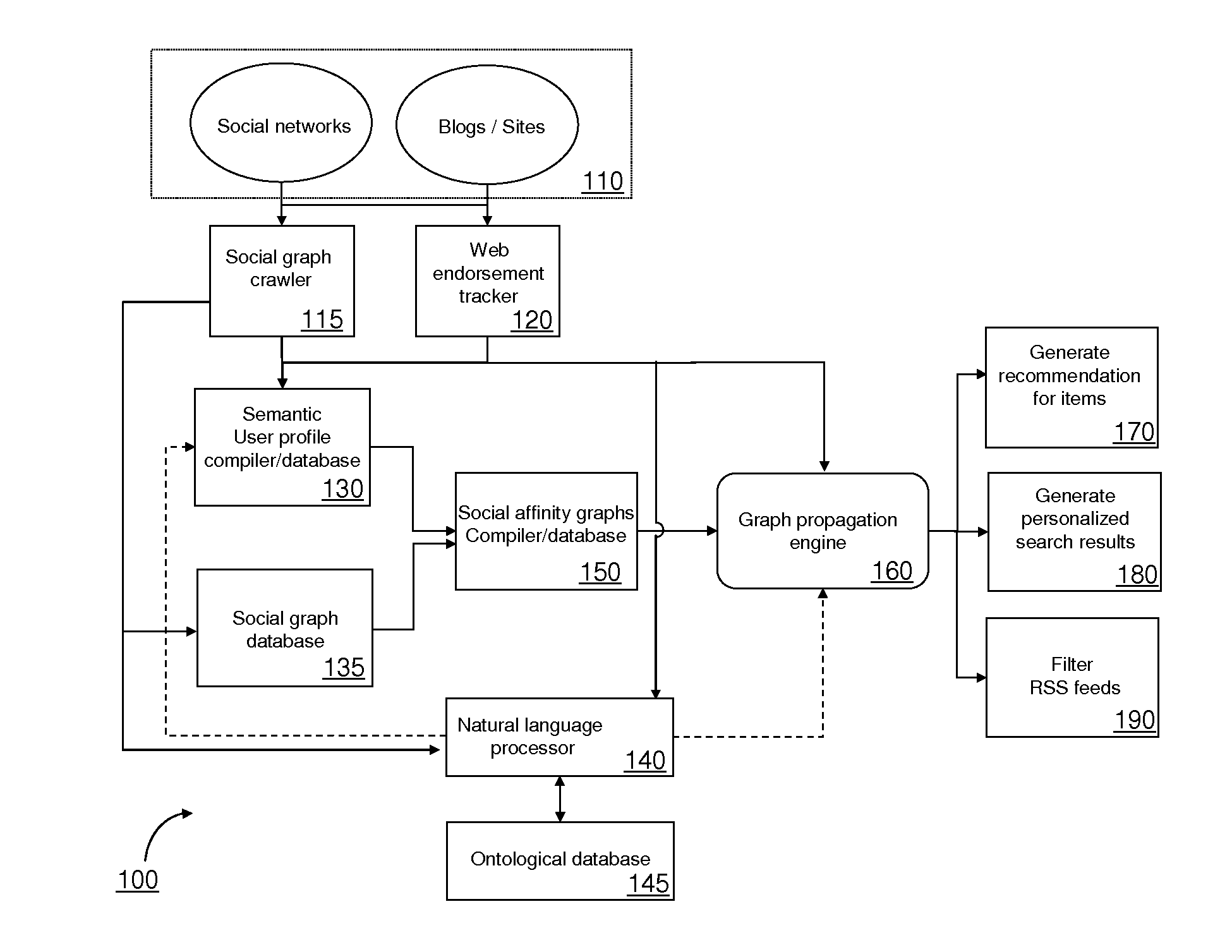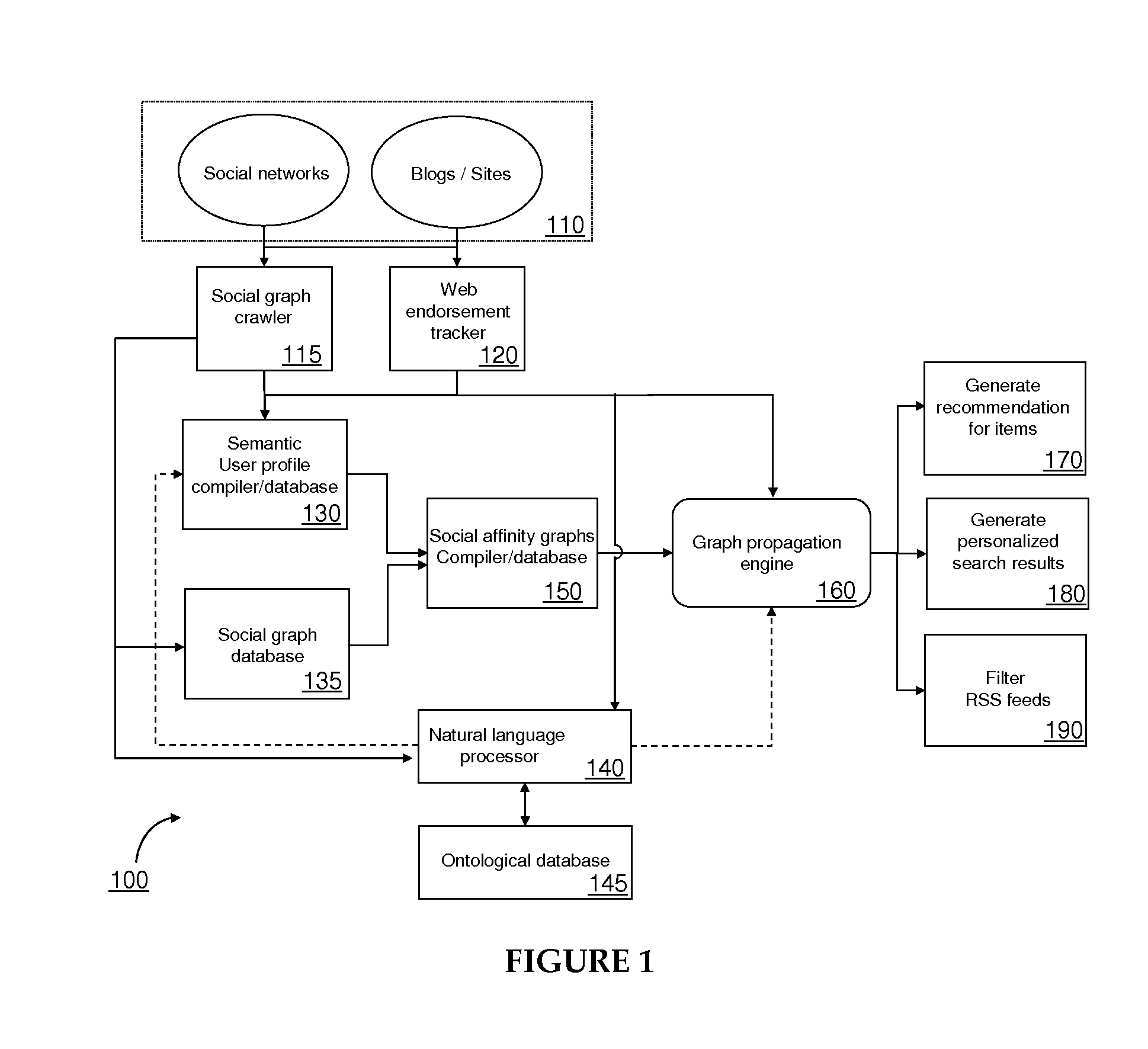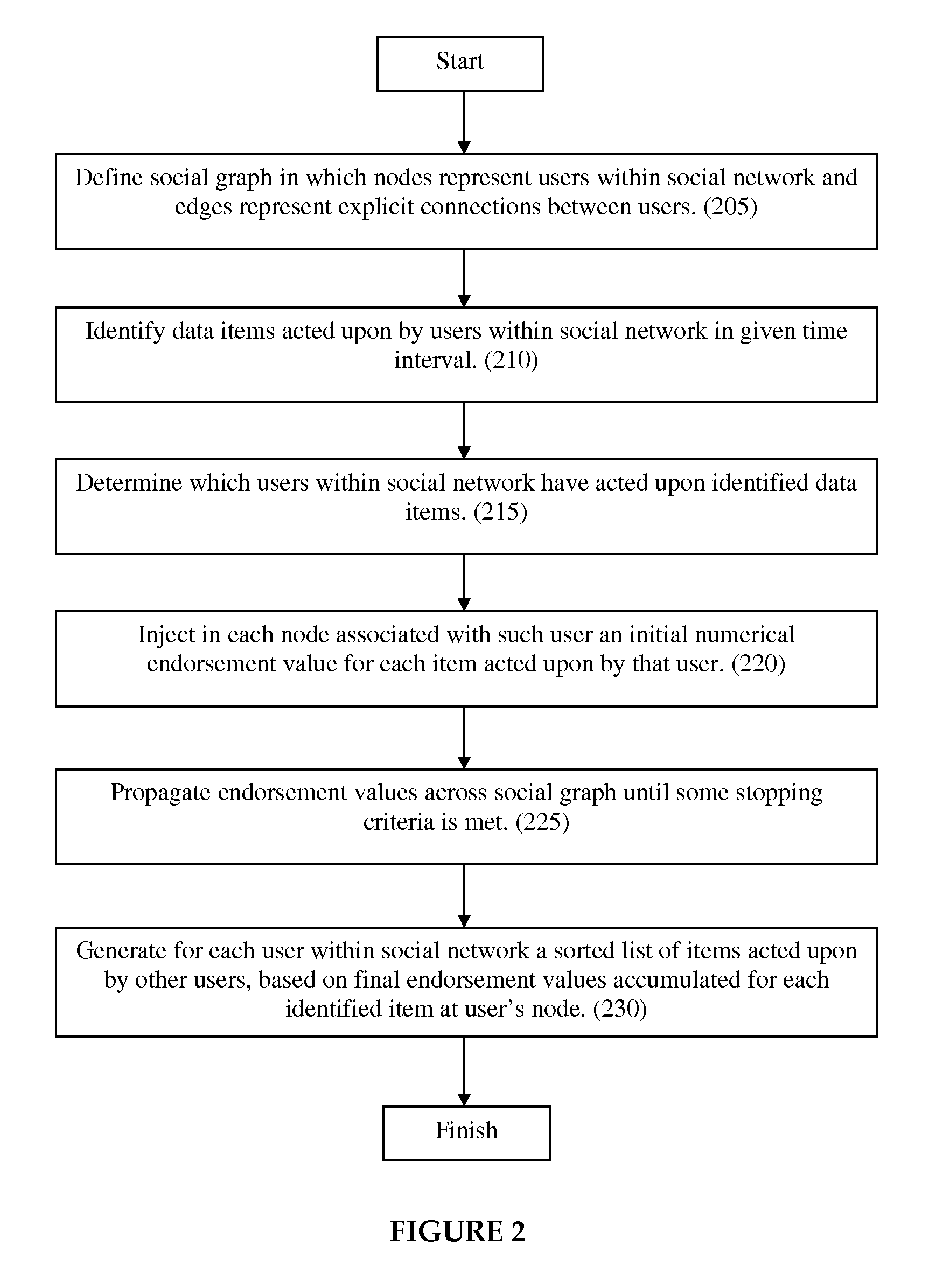Social Graph Based Recommender
a social graph and recommender technology, applied in image data processing, instruments, transmission, etc., can solve the problems of excluding the vast majority of potentially relevant items, both of the aforementioned approaches suffer from limitations, and the common situation of information overload
- Summary
- Abstract
- Description
- Claims
- Application Information
AI Technical Summary
Benefits of technology
Problems solved by technology
Method used
Image
Examples
Embodiment Construction
[0020]In what follows, the present invention will be described in reference to embodiments that generate personalized rankings for information items acted upon by profiled users of the World Wide Web. More specifically, the embodiments will be described in reference to generating personalized ranked lists of Web items for recommendation purpose, using a social graph based constrained propagation method. However, embodiments of the invention are not limited to any particular environment, application or specific implementation. For example the embodiments described below are in reference to uniquely identified Web items (e.g. activity feed entries in online social networks, site links, blog posts, Web videos, etc) but the invention can be advantageously applied to provide suggestions for any type of information item acted upon by users profiled within a social graph (e.g. email messages, applications for mobile phones, reference to a physical place, etc). Therefore, the description of...
PUM
 Login to View More
Login to View More Abstract
Description
Claims
Application Information
 Login to View More
Login to View More - R&D
- Intellectual Property
- Life Sciences
- Materials
- Tech Scout
- Unparalleled Data Quality
- Higher Quality Content
- 60% Fewer Hallucinations
Browse by: Latest US Patents, China's latest patents, Technical Efficacy Thesaurus, Application Domain, Technology Topic, Popular Technical Reports.
© 2025 PatSnap. All rights reserved.Legal|Privacy policy|Modern Slavery Act Transparency Statement|Sitemap|About US| Contact US: help@patsnap.com



